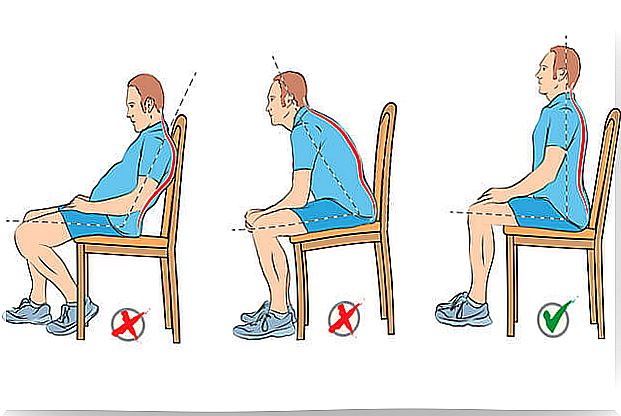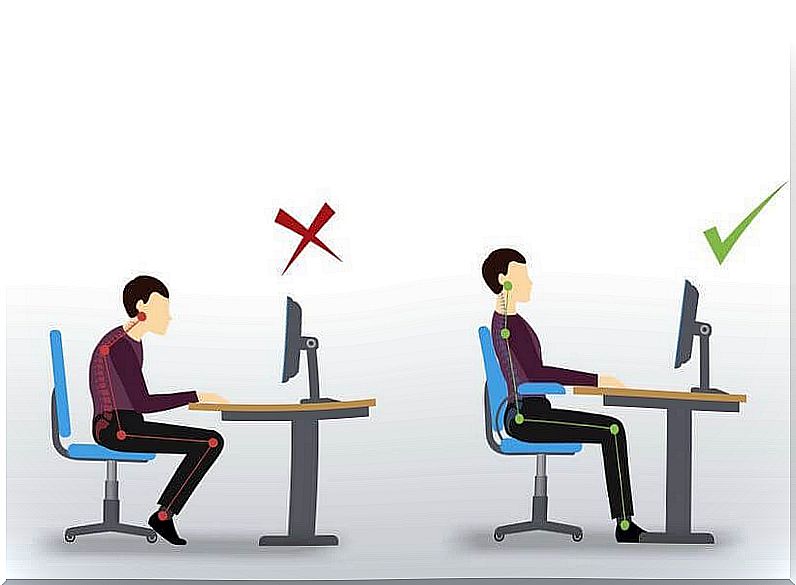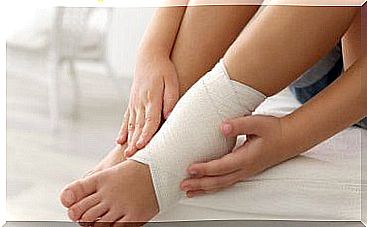Tips To Sit Well And Avoid Pain
If your work is at the office, the habit of sitting well can save you back pain and even muscle spasms derived from poor posture. What are the best ways to stay seated?

No matter how ergonomic the seat you use every day in the office, good posture is always necessary. There are habits that we do not know and that would be very useful to reduce or prevent the well-known lumbar or cervical pain. Find out in this article how to sit well to avoid pain in the spine.
Tips to sit well
In the decalogue of recommendations so that the column does not suffer we can find the following:
- The feet must be completely flat on the ground.
- The knees must be level with or above the hips.
- The back of the chair must respect the curvatures of the back and contain the lumbar arch.
- The computer screen should be 18 inches away from the face and below the eyes.
- The keyboard should be low enough to prevent the shoulders from being raised.
- The wrists and forearms must be straight, at the sides of the body.

- The breaks have to take place every hour; it is necessary to get up from the seat.
- Neck or shoulder rotation exercises should be done standing and sitting.
- Posture does not always have to be static, and it does not have to be forced either.
- The weight of the body must be distributed between the chair and the floor.
Sitting correctly reduces pain

Working a minimum of 8 hours in front of the computer is the norm in today’s society. Our employment may or may not be routine, but it sure meets the condition that we are seated for a good part of the day.
Beyond that you do not like what you do (or yes) it is up to you to sit well and thus avoid recurring back and neck pain. In fact, between 60% and 90% of people suffer or will suffer this type of lumbar complications at some point in their life, according to the European Agency for Safety and Health at Work.
Most of them do not have a serious pathology or have suffered an accident. It is simply about the type of job they do and, above all, how they tend to sit, a combination that ends up resulting in poor posture.
When a person works standing up, the area that suffers the most is the lower back. On the other hand, if the job requires sitting all day, it is the cervical area that suffers, as well as the wrists.
In the first case, doctors recommend sitting for a few minutes every 1 or 2 hours; while, in the second, it is advisable to stand up several times a day and, in addition, maintain a correct position in the seat.
Other recommendations for good posture
Ideally, in addition to getting up, walking and stretching our muscles for about 5 minutes per hour, we would be well seated for the remaining 55 minutes. This may sound like a utopia, but with a little practice and commitment we can do it.
To those that we discussed previously, we add other tips to sit correctly:
- The chair cannot be very high because it makes us lose the natural lumbar curvature. With such a position, it is easier for the pain to become chronic.
- The seat has to be as low as possible so that the knees align with the horizontal axis. Also, it is imperative that it is close to the desk.
- The back may be stuck when the back of the chair, but a slight separation will make us maintain an upright and active posture for longer.
- It would be nice if we had an inclined platform where we could rest our feet from time to time. Thus, the knees would be raised a little and the pelvis would be higher; feet can never be “dangling”.
- At least two-thirds of the thighs must be supported on the seat. How do we get it? Putting your back well behind! Sitting on the edge can cause circulation or nervous problems.
Choosing a good chair

On the other hand, desk chairs that have forearms are better because they allow us to rest our wrists when we are not using them. We must bear in mind that the lack of rest in this area causes carpal tunnel syndrome, also called “secretary’s disease”.
As for the backrest, it is better if it is straight (although they make us believe that the ergonomic is the most successful option). In turn, it must reach the height of the shoulder blades at least. If we have to buy a new chair, a good idea is the “executive” type.
Finally, regardless of the chair you choose, never cross your legs. This is common in women, but can be bad for the back.
Crossing the legs, blood circulation is affected and, therefore, episodes of tingling or numbness of the feet are more frequent. As if that were not enough, this affects the sciatic nerve and can cause pain from the knee down or in the lower back.
If we use a laptop, it is recommended to place it on a support and use a wireless keyboard to avoid cervical tension. The distance to the eyes should be the same as on a desktop computer screen.
The worst postures when sitting
It is also worth detecting what wrong positions we take when sitting all day at the computer and which, of course, we do not realize. The most frequent and harmful are:
- Wobble (lean to the sides).
- Sit on one or both legs bent.
- Staying like a statue (motionless).
- Lean towards the screen to see better (it is preferable to zoom the page or wear glasses).
- Making inappropriate head turns (if we use more than one screen or take information from a paper on the desk).
By forming the habit of sitting well it is possible to prevent many ailments, aches and pains in the back. While it may take some getting used to, it is something that undoubtedly offers great benefits.









